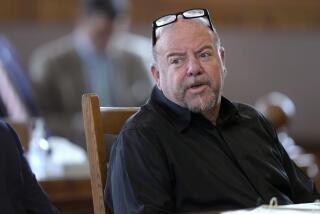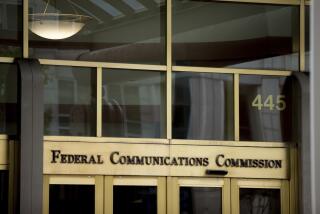Editorial: Can Lifeline close the digital divide?

Federal Communications Commisison Chairman Tom Wheeler, seen testifying in Congress last March, is proposing that the FCC expand a phone subsidy program for the poor to include Internet access.
The federal government has been offering subsidies to help the poor afford phone service since the court-ordered breakup of the Ma Bell system in the mid-1980s. Now the chairman of the Federal Communications Commission wants to give low-income Americans a new option by letting them use the Lifeline subsidy for high-speed Internet connections instead of a home phone line or a mobile phone account. The change is worth making. But as the FCC admits, it’s quixotic to think that merely providing a discount on broadband will close the digital divide.
Funded by fees on all types of phone service, Lifeline’s original goal was to connect all American households to vital local services and to their communities at large. Relatively few people signed up for the Lifeline discount, though, until the FCC opened the door in 2005 to prepaid wireless services. They attracted millions of new Lifeline customers by offering cellphones with a limited number of minutes of talk time for the price of the monthly subsidy.
Noting how important broadband has become to so many aspects of modern life, including employment, health and education, FCC Chairman Tom Wheeler proposed last week to let Lifeline discounts be used for Internet access instead of phone service, or for a combination of the two. He also proposed several steps to deter the fraud that infected the program after the prepaid services became involved.
Some critics of the program want to abandon it in light of the fraud. Others worry that extending the discounts to broadband would raise the program’s costs, which are passed on to everyone who pays for phone service. The FCC can answer those concerns by improving accountability and holding the subsidy at its current level ($9.25 per month), as Wheeler has proposed.
A larger issue, though, is whether offering discounted broadband will be enough to bring many low-income families online. Less than half of the households with incomes less than $25,000 a year have broadband at home, and although affordability is a factor, consumer advocates and Internet service providers say that the cost of computers (or smartphones) and the lack of digital skills are at least as important. There’s also the question of whether a broadband connection that can’t necessarily make 911 calls amounts to a Lifeline service.
The FCC is aware of these issues, having recently completed a series of pilot projects that offered discounted broadband to low-income consumers. And with new anti-fraud measures in place, it makes sense to allow the current Lifeline discount to be applied to broadband and see if it brings more low-income families online. If not, it will be time for Congress to find a better way than Lifeline to close the digital divide.
Follow the Opinion section on Twitter @latimesopinion and Facebook
More to Read
A cure for the common opinion
Get thought-provoking perspectives with our weekly newsletter.
You may occasionally receive promotional content from the Los Angeles Times.










